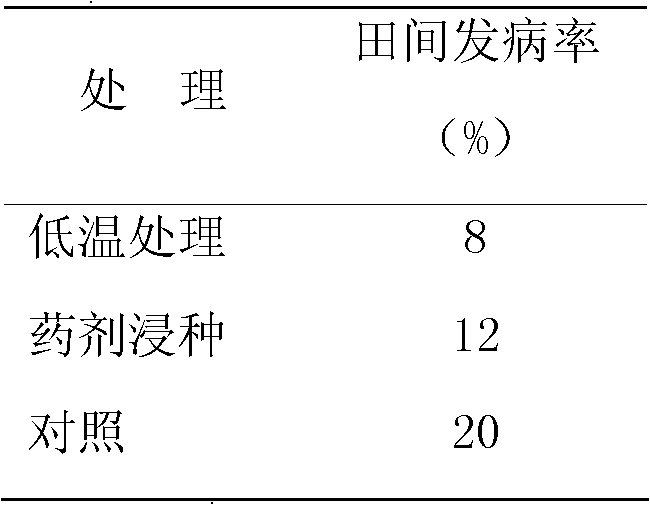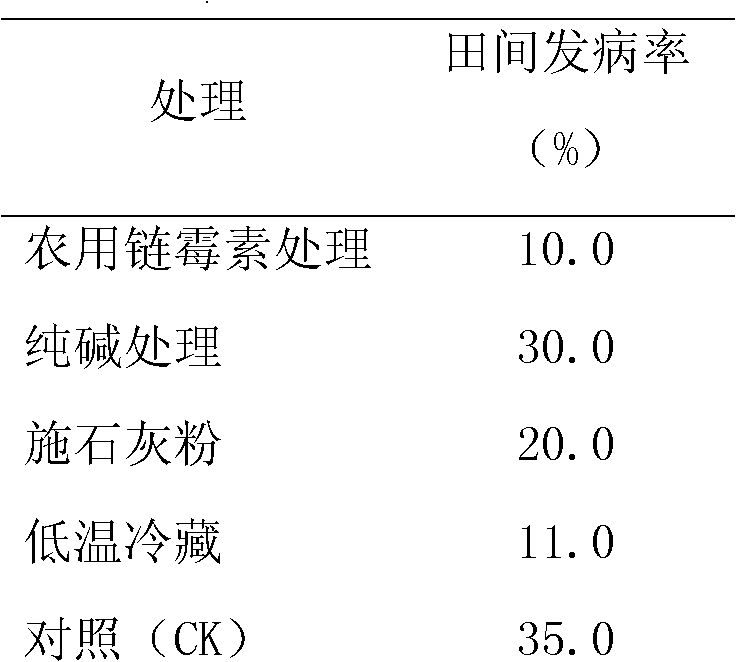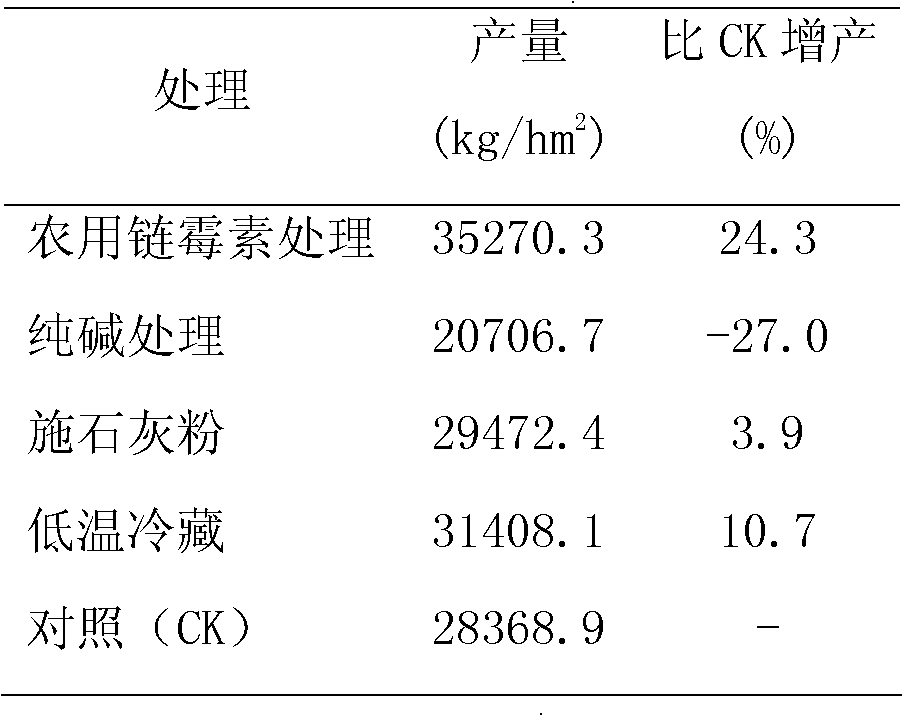Method for preventing konjak soft rot
A technology of soft rot and konjac, applied in the field of plant protection, can solve the problems of farmland and environmental pollution of agricultural products, and achieve the effect of good disease control effect, high yield and simple method
- Summary
- Abstract
- Description
- Claims
- Application Information
AI Technical Summary
Problems solved by technology
Method used
Image
Examples
Embodiment 1
[0008] (1) Test material
[0009] The experiment was carried out in the crop specimen garden of Yunnan Agricultural University from March to August 2002. The soil was red loam with medium fertility. The konjac cultivar "Mahua 15" was selected as the test material, and the average weight of each underground corm was 14.0g. When the local temperature stabilized above 15°C, it was sown on April 27, and 25 taro seeds were sown in each treatment, arranged in random blocks, and repeated three times. Three treatments were set up in the experiment: low-temperature refrigerated taro seeds, seeds soaked in chemicals and control. Low-temperature refrigerated taro treatment: Before sowing, place the taro in a refrigerator at 5°C for 30 days before sowing.
[0010] (2) Test method
[0011] Before sowing, dig the seeding ditch, and then every 667m 2 Apply 1500-2000kg of farm manure, 30kg of general calcium and 15kg of potassium sulfate as the base fertilizer, and mix well with the soil;...
Embodiment 2
[0019] (1) Test material
[0020] The Amorphophallus konjac "Chuhua No. 2" was selected as the test material. The size of the taro was the same, and the average weight of a single stem was 145 grams. The test chemicals were 72% agricultural streptomycin, soda ash, and lime powder.
[0021] (2) Test method
[0022] The experiment was carried out from April to December 2005 at the teaching experiment farm of Yunnan Agricultural University. Sowing on April 14, the test set 5 treatments, respectively agricultural streptomycin treatment: soak the seeds with 72% agricultural streptomycin 3000 times solution for 30 minutes before sowing, and spray the leaves with the same concentration of drug solution after emergence; soda ash treatment : Soak the seeds with 200 times of soda ash solution for 30 minutes before sowing, spray the leaves with the same concentration of medicinal solution after emergence; apply lime powder: use lime powder (50kg / 667m 2 ) in the sowing ditch, and sprink...
Embodiment 3
[0034] (1) Test material
[0035] "Chu Mohua No. 1" was selected as the test material, provided by the Konjac Research Institute of Yunnan Agricultural University. Select konjac bulbs with the same size, smooth skin, full and strong terminal buds, no damage, and no pests as seed taro, with an average single stem weight of 145g.
[0036] (2) Test time, place and test design
[0037] The experiment was carried out at the teaching experiment farm of the College of Agronomy and Biotechnology of Yunnan Agricultural University from March to December 2010. The soil was red loam with medium fertility. The experiment adopts random block arrangement, sets 4 treatments, repeats three times, a total of 12 plots, the plot length is 3m, width is 2m, and plot area is 6m 2 .
[0038] (3) Test method
[0039] Agricultural streptomycin treatment: Soak the seeds with 72% agricultural streptomycin 3000 times solution for 30 minutes before sowing, sow the seeds after the drug solution is dried...
PUM
 Login to View More
Login to View More Abstract
Description
Claims
Application Information
 Login to View More
Login to View More - R&D
- Intellectual Property
- Life Sciences
- Materials
- Tech Scout
- Unparalleled Data Quality
- Higher Quality Content
- 60% Fewer Hallucinations
Browse by: Latest US Patents, China's latest patents, Technical Efficacy Thesaurus, Application Domain, Technology Topic, Popular Technical Reports.
© 2025 PatSnap. All rights reserved.Legal|Privacy policy|Modern Slavery Act Transparency Statement|Sitemap|About US| Contact US: help@patsnap.com



